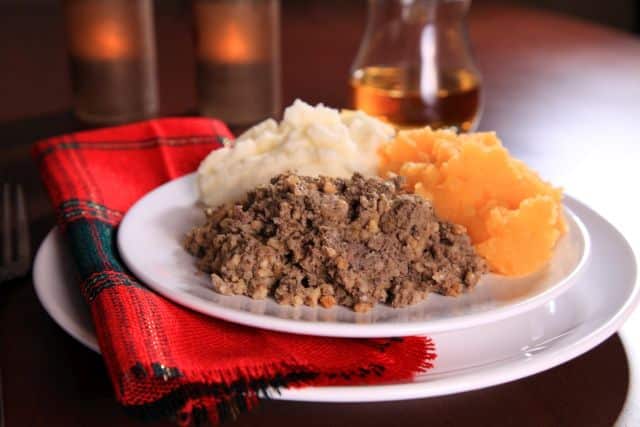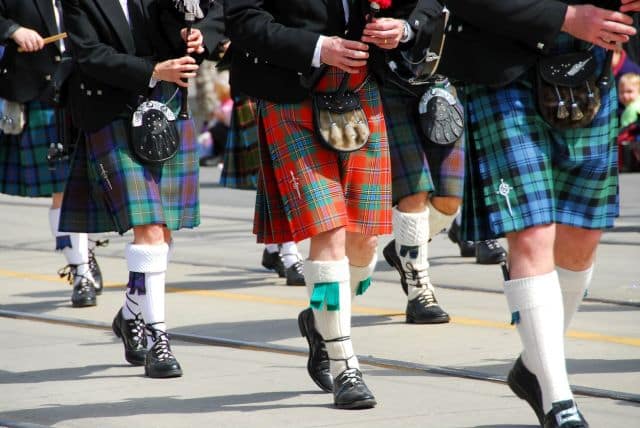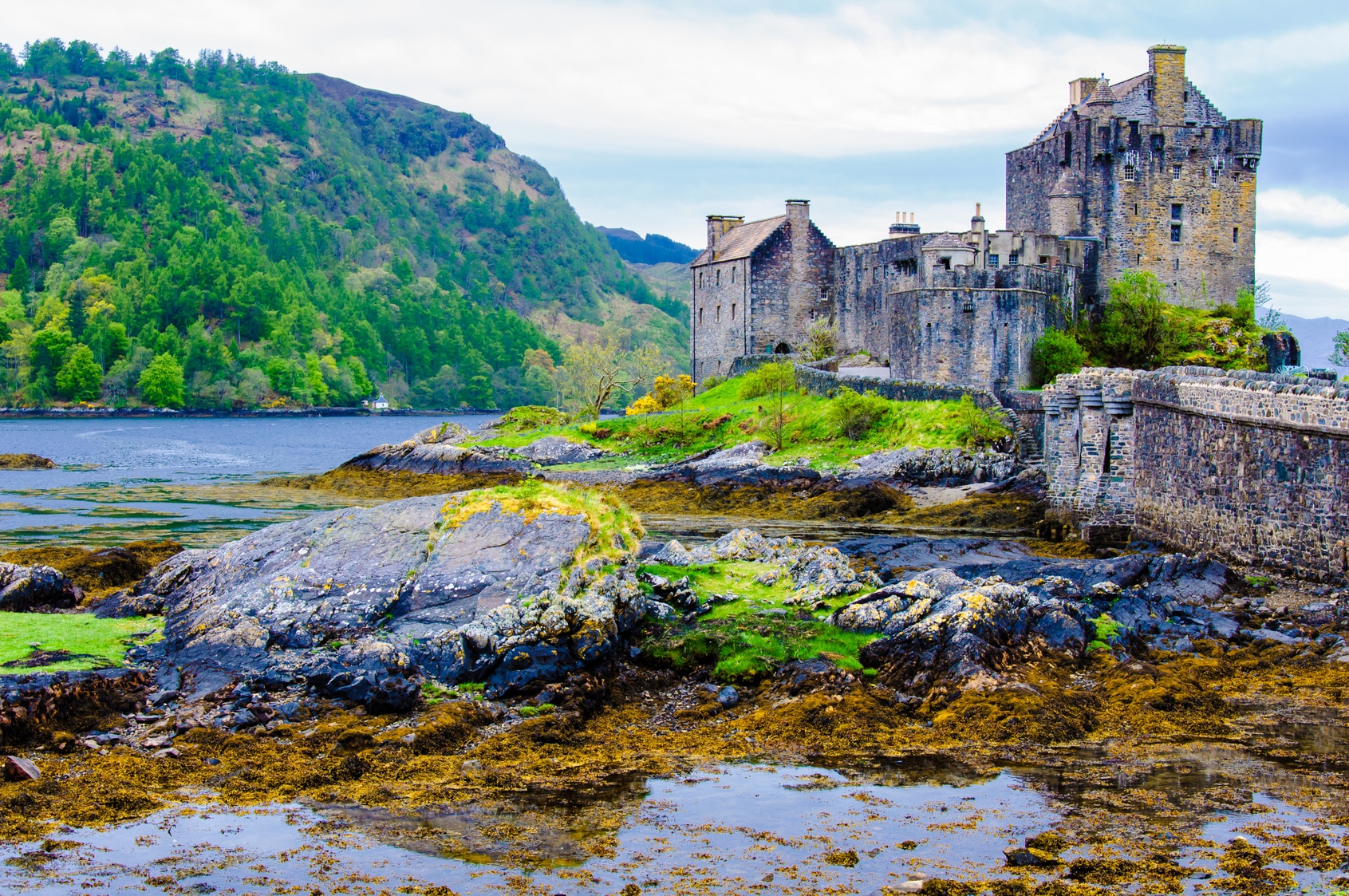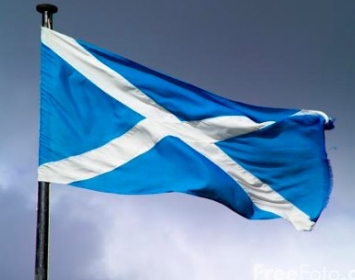St. Andrew’s Day, celebrated on November 30 each year, is considered a national holiday in Scotland and across Europe. Known as the patron saint of Scotland, Romania, Greece, and many more European countries, St. Andrew was an crwho not only introduced his brother, Peter, to Jesus but also helped Scottish King Oengus I win a crucial battle against Northumberland, securing Scotland’s safety. St. Andrew died a martyr and was crucified on a saltire, or an “X” shaped cross, in Greece in 60 AD.
source: National Today
How to observe St. Andrew’s day?
Throw your own St. Andrew’s feast

Scotland’s food and drink plays a big part on St Andrew’s Day. For starters, the traditional soup dish cullen skink is often served; made of smoked haddock, potatoes and onions. When it comes to the main course, there can only one dish to celebrate Scotland’s patron saint, haggis, neeps (turnip), and tatties (mashed potato). Dessert is a dish best served hot especially on cold winter nights, round off your feast with clootie dumpling and custard. A traditional Scottish dessert made of dried fruit, spices, oatmeal or breadcrumbs, flour, and beef suet. The word ‘clootie’ derives from the Old Scots word ‘cloth’ where the dumpling was traditionally boiled.
source: Visitscotland
Wear a kilt
Kilts are made of tartan, worn around the waist and accompanied by a sporran, which is a small bag worn over the kilt, a kilt pin which holds the two pieces of tartan together at the front, and a sgian dubh, a small dagger which sits in the sock.

Originating back to the 16th century, the kilt first appeared as a thick, woollen full-length garment whose upper half could be worn over the head as a hood, or as a cloak draped over the shoulder. It wasn’t until the late 17th or early 18th century that the knee-length kilt was developed and was worn throughout the Highlands and northern Lowlands.
Its design allowed those who wore it to move much more freely, essential in the Highlands of Scotland where the weather can become very damp. The tight weave of the wool created a strong barrier between the rain and skin, and could easily be removed and used as a blanket during cold nights. Its popularity soon increased once the Highland regiments of the British Army adopted the design, and over the centuries has developed to include pleats and brightly coloured tartan patterns, unique to the clan to which the wearer belongs.
During the 19th century, Scottish kilts often used family tartan and were worn as a form of ceremonial dress at occasions such as weddings, sporting events and the Highland Games. Nowadays, the kilt is recognised the world over and is worn by many for both formal and informal occasions.
source: Cottages and Castles
Drink whiskey
Since St. Andrew’s Day is considered Scotland’s national holiday, Scots go all out with weeklong festivals, parties, and more. You can find a glass of whiskey or beer in just about anybody’s hand during the celebrations!
source: National Today
How is it celebrated in Hungary?
The Chain Bridge is usually dressed in blue lights to mark this special occasion. Although the landmark is closed for renovation in 2021, in previous years, on 30 November, the St Andrew’s Association has organised these illuminations in the colours of the Scottish flag.
But the occasion involves more than just whisky and dancing. It also showcases the long-lasting relationship between Scotland and Budapest. Not every capital is fortunate enough to say that its most beautiful bridge was completed by Edinburgh-born engineer Adam Clark, who settled in Budapest after his great work was finished.

Clark married a Hungarian and raised his family here. A plaque at Ybl Miklós tér 6 near the Semmelweis Museum of Medical History shows where they lived, and marks the date when Clark died, 23 June 1866.
The inscription also details that the Scot built the Tunnel behind the Chain Bridge. This provides the inspiration for a legend told to Hungarian children, that the lions on the bridge are towed inside the tunnel when it’s raining.
As well as being a respected figure in Hungary, taught at history lessons in school and honoured with a bust on Városligeti körút, Adam Clark is also the name of the square by Chain Bridge.
Moving to the Pest side, the embankment there carries the name of Jane Haining, Scotland’s only Holocaust hero. Matron of the girls’ home at the Scottish Mission Church, Haining saved many lives as the war took its terrible course.
And lastly, the Church of Scotland is also present here and they run St Columba’s Scottish Presbyterian Church on Vörösmarty utca. The Scots mission was set up here in 1841 and has continued to serve as a welcoming community.
So, the Scottish presence is alive and well in Budapest today, the city full of memories inspired by Scots. Hungarians are also partial to whisky and dancing, so a ceilidh might just be the best tonic to seal the deal.
source: We Love Budapest; video: St Andrew’s Day: Explained, a little., VisitScotland, Youtube
A cikk elolvasása után döntsd el, hogy a következő félmondatokat melyik folytatás (A vagy B) egészíti ki. Vannak mondatok, amelyeknél mindkét folytatás helyes lesz (AB) a cikkben olvasottak alapján.
Vocabulary
| to consider | tekinteni |
| patron saint | védőszent |
| crucial | fontos/döntő |
| to secure | biztosítani |
| to be crucified | keresztre feszítik |
| saltire | András kereszt (x alakú kereszt) |
| to observe | megünnepelni |
| feast | lakoma/ünnep |
| cullen skink | sűrű skót halleves (füstölt tőkehallal, hagymával és krumplival) |
| haddock | tőkehal |
| haggis | a hagymával, zabliszttel, árpával és faggyúval elkevert, finomra vagdalt birkaszívvel, -tüdővel és -májjal töltött birkagyomor, kifőzve |
| neep (Scottish)/turnip | fehérrépa |
| tatties | krumplik (itt törtkrumpli) |
| to round off | befejezni |
| clootie dumpling | szárított gyümölcsökkel és faggyúval készített gőzölt gombóc |
| custard | tejsodó |
| oatmeal | zabliszt |
| breadcrumbs | zsemlemorzsa |
| beef suet | marha faggyú |
| Kilt | skótszoknya (férfiak által viselt) |
| tartan | skótmintás szövet |
| waist | derék (testrész) |
| sporran | bőrerszény |
| a kilt pin | kilt szoknyát összekapcsoló tű/bross |
| sgian dubh | kisebb kés, amit a kilt viselésekor a zokniba téve viselnek |
| dagger | tőr |
| sock | zokni |
| to originate | eredni/származni |
| to appear | megjelenni/feltűnni |
| woollen | gyapjú |
| garment | ruha/öltözet |
| hood | kapucni |
| cloak draped over | (vállon) átvetett köpeny |
| the knee-length | térdig érő |
| essential | alapvető |
| damp | nyirkos/nedves |
| tight weave | szorosan szőtt |
| barrier | akadály |
| to remove | eltávolítani |
| blanket | takaró |
| to increase | növekedni |
| regiments | ezredek |
| to adopt | alkalmazni |
| pleats | redőzések/ráncok |
| brightly coloured | színpompás |
| patterns | minták |
| unique | egyedi |
| wearer | viselő |
| ceremonial dress | ünnepi ruha |
| to recognise | felismerni |
| weeklong | egész héten át tartó |
| Tunnel | Alagút |
| to provide inspiration | inspirációt biztosítani |
| to tow | bevontatni |
| respected | tisztelt |
| illuminations | kivilágítások |
| occasion | alkalom |
| to involve | magába foglalni |
| relationship | kapcsolat |
| fortunate | szerencsés |
| to settle in | letelepedni valahol |
| to raise family | családot felnevelni |
| to mark | megjelölni |
| inscription | felirat |
| to detail | részletesen felsorolni |
| to be honoured with a bust | (őt) megtisztelni egy mellszoborral |
| embankment | rakpart |
| to take its course | lezajlani |
| to be partial to | kedvelni valamit |
| ceilidh | mulatság tánccal |
| to seal the deal | megpecsételni az ’üzletet’/ megállapodást |




